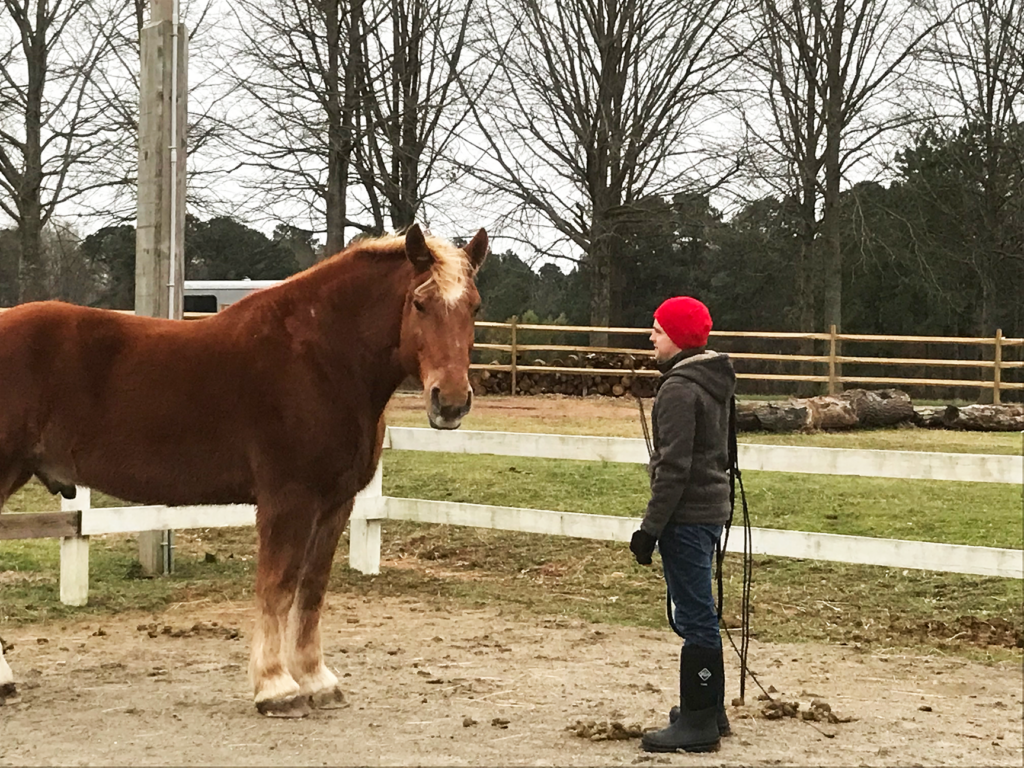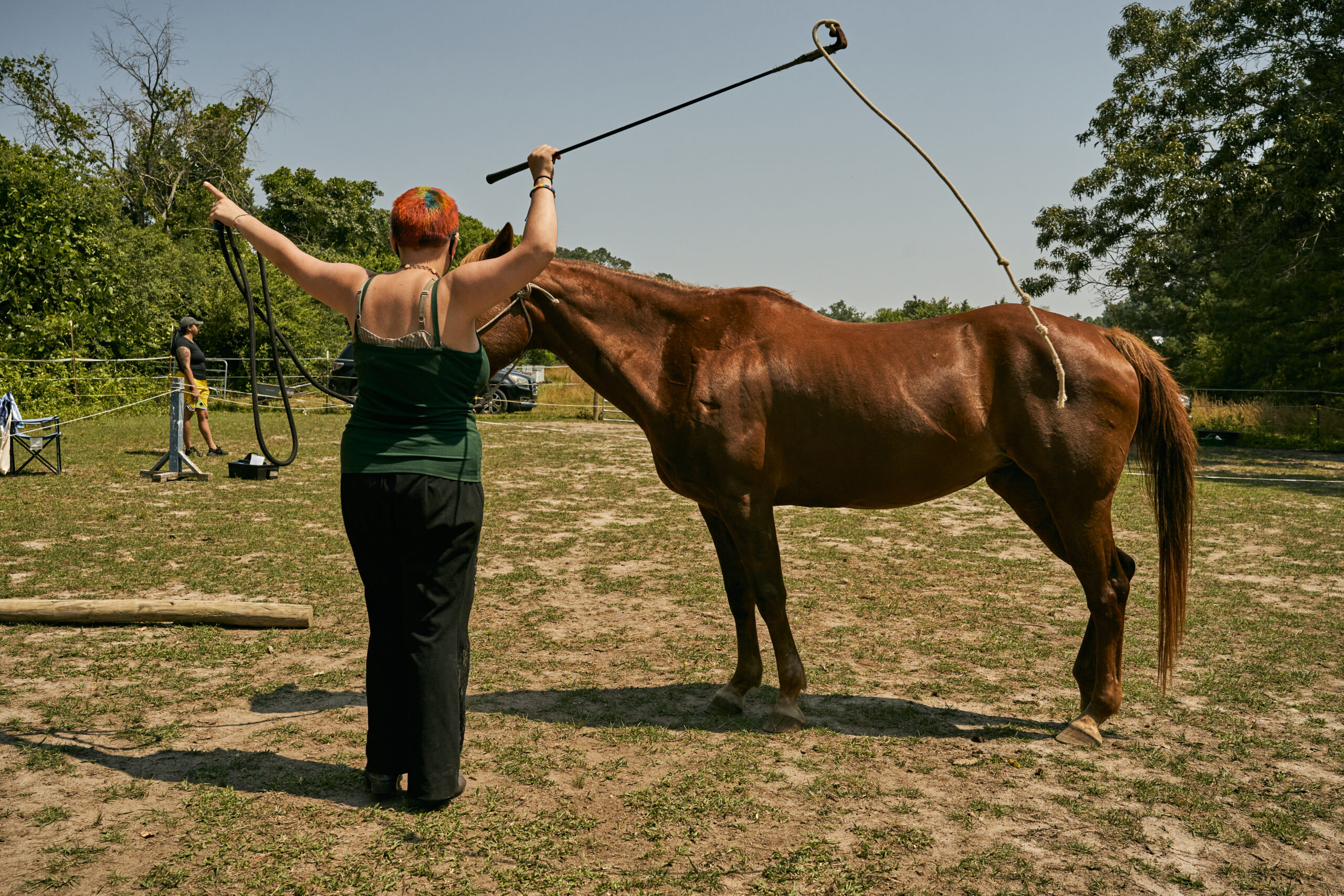
Relationships are tough to build and develop. They require people or animals whose personality traits click well with your own and often incorporate an unknown X-factor. Once these relationships form, there are a myriad of cues that convey information about feelings, expectations, or relationship boundaries. Interpreting these complex signals can be a challenge for anybody, but can be especially challenging for individuals facing emotional and/or physical trauma in their lives.
One technique CORRAL Riding Academy uses to help middle and high school girls navigate, cope, and heal from the trauma in their lives is Equine-Assisted Psychotherapy (EAPT). EAPT promotes healing and growth by building a relationship between a CORRAL girl and horse, with the assistance of an equine specialist (ES) and professional therapist. The ES offers the girl professional, equine advice about how to safely develop a relationship with a horse using ‘Natural Horsemanship’ and interprets the horses subtle (and not so subtle) nonverbal communication for the therapist. These nonverbal signals are then used by the therapist to guide therapeutic sessions with the girls.
Horse Sense: Communicating Nonverbally
Interpreting a horse’s nonverbal communication is an ability I grew up calling ‘horse sense’ or your ability to gauge what a horse is saying about your relationship. Horse sense is a difficult skill to acquire and takes time with horses to learn. Every Friday, CORRAL ES personnel spend time building and maintaining their relationships with CORRAL horses. I recently joined CORRAL and have been training as an ES. So far, I have been working with Bob the draft horse.

CORRAL uses an equine training technique known as Natural Horsemanship which relies on communicating with horses by applying non-contact pressure using body language. This means that by standing in a certain way, or even making a specific facial expression, an ES can tell their horse to go away (detachment) or come to them (attachment). In my first session with Bob, I began navigating the nuances of these extremely subtle cues. There were moments my body position would signal Bob to perform a yield (such as swinging his butt away from me, moving forward, or backing up), but there was a problem. The yields Bob gave me were not the ones I thought I had requested. This is a very raw, untrained horse sense.
My brother always had this raw, natural talent. He could walk into a pen of horses and start having them dance for him. Later, I would ask, “How did you do that?” His casual response was always, “I don’t know. It just happens.” He had (still has) a natural horse sense that lets him build connections effortlessly, without thinking, and allows him to naturally play with his horses.
An Overthinker…
As for myself, I have always been an overthinker. In my job as a computational chemist, this can be a good thing. My critical over-analysis allows me to thoroughly think about and calculate approaches to a chemical problem. I can contemplate the pros of using a particular model for my research, then I predict critiques a reviewer may raise about my methodology or reasoning. But, this over-analytic process also slows me down. Instead of just doing a job, I spend hours, days, or even weeks, just thinking about a problem before ever getting started. This delayed response can be very frustrating for my collaborators and boss.
While this analysis is good for producing accurate and reliable science, it is not as useful on a mountain bike or working a horse. There is a mountain bike obstacle that has given me countless crashes. The first crash occurred because I tried to ride the obstacle too fast. My second crash resulted from going too slow and over-compensating the turns. By my third attempt, the only thing I could visualize was the impending wipe-out. Naturally, I crashed again.
The more I thought about navigating this obstacle, the more difficult it became to execute. Then one day, I decided to pedal through the turn, look forward, and let the bike’s momentum do the rest. When I stopped thinking about how to navigate and control the situation, physics and momentum guided my bike, safely to the end.
Apply Past Experiences
I felt a very similar experience working with Bob Friday night, as my brain kept impeding the relationship we were building. Instead of watching how Bob was responding to me and asking, “Why did he do that?” I chose to ask, “How do I dictate Bob’s response?”. Leanne, CORRAL’s equine manager, kept trying to point this out by telling me stop overthinking the situation and focus on my relationship with Bob. This response only added to my growing exasperation.

But, at some point the message began to sink in after my frustration (slowly) disappeared. As these feelings began to fade away, Bob and I stood there watching the other ES trainers navigate their own relationships. As we observed the other ES trainers, both of us began to relax. Bob patiently waited for me to figure out what I wanted from our relationship and what I was expecting from him. During this self-reflection I discovered that Bob and I had both been frustrated with each other. I was disheartened not knowing how to accomplish a task and Bob was discontented with the obscurity of my requests.
After that dawning realization, what I wanted became simpler. Let’s just move, and we would. Bob and I still have a lot communication barriers to overcome, but, as long as I keep my brain out-of-the-way and don’t ‘overthink’ our relationship, we’ll figure it out.

About the Author:
George Van Den Driessche grew up training horses to ride and drive on a small farm in Michigan. Volunteering as an Equine Specialist (ES) with CORRAL has allowed him to return to his passion of working with horses. He is currently pursuing his PhD in Cheminformatics at NC State where he uses computer models to predict drug activity. George also interns with NC State News as a science journalist. You can follow his research and writing career on Twitter at @George_V14. He and his wife live in Cary with their two dogs — Athena and Mowgli.





